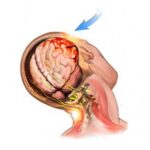Every year, more than 1.5 million people fall ill because of medication errors. The healthcare reforms approved earlier this year pushed medication mistakes into the spotlight, but the rates of these errors continue to remain high, with few improvements in sight.
Most medication errors occur in pharmacies, hospitals, nursing homes and other facilities. At the Horn Law Firm, approximately 85% of the pharmacy error cases we take on involve mistakes made by one of the large retail pharmacy chains, like Walgreens, Wal-Mart and CVS.
Among these prescription errors, 53% involved the wrong drug, while 34% involved the wrong dosage of the drug, and 13% involved wrong administration of the drug.
Here are 7 of the most common prescription errors.
- Wrong medications due to similar names – These can occur because the pharmacist misreads the doctor’s handwritten prescription, or a technician pulls out the wrong drug from the shelf.
- Wrong dosage – These errors occur frequently in hospitals when IV drugs are administered, but they can also occur when handwritten prescriptions or labels are misread. Misplaced decimal points are a common source of dosage error.
- Misinterpreting drug interactions – These can occur when you are on more than two medications. These drugs can interact with each other, which is why it’s so important that pharmacists and doctors take the time to explain side effects and drug interactions.
- Combinations of medications with similar ingredients – When you’re on more than one medication that contains the same ingredients or compounds, there is the danger of an accumulation of the compound that can lead to a possible overdose.
- Combining brand-name drugs and generic versions – Generic drugs contain the exact same ingredient that is contained in brand-name drugs. However, patients may not be aware of this. Therefore, they may combine drugs with similar compounds – one, a brand-name version and the other, a generic version – in their homes, and not even know it. Taking both medications could cause an overdose.
- Mixing over-the-counter drugs with prescription drugs – Patients tend to think anything they buy over the counter, is safe to use. However, these over-the-counter drugs can interact with any prescription medications that you’re on, leading to serious injuries.
- Mixing alcohol with prescription drugs – Not every patient may be aware of the kind of effect alcohol can have on the medications their taking. That’s why it’s so important that doctors and pharmacists take time to ask the patient about lifestyle and other habits, such as alcohol use, while prescribing medications.




